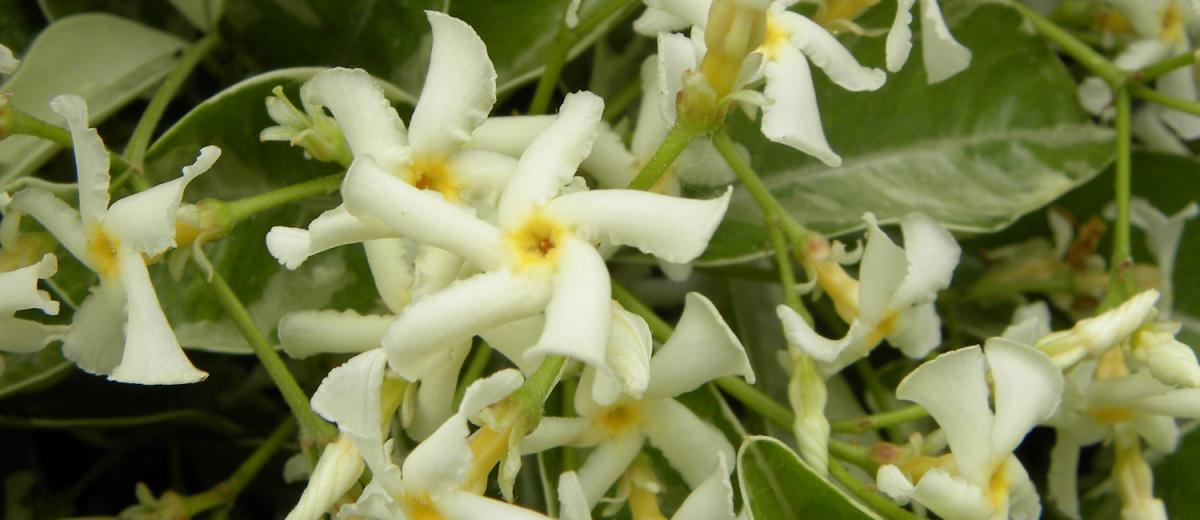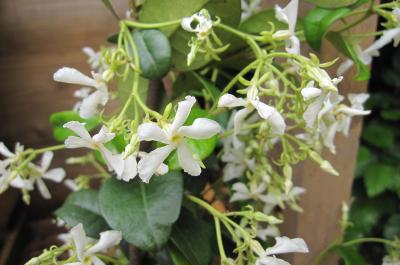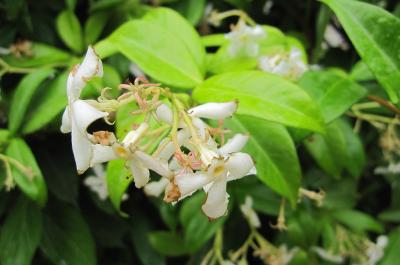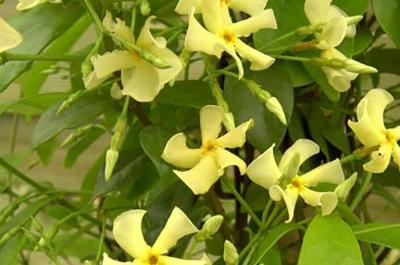26. Les arches de jasmin étoilé
The arches of star jasmine

Plants love to run and climb, invade and cover, just like the star jasmine, which will progressively take over the Goualoup walkway, providing denser shade and a stronger fragrance as the season goes on and the days get hotter.
The name “star jasmine” conjures up the idea of a climbing plant, with bunches of white flowers, with an elegant fragrance similar to jasmine: these are in fact the qualities of this twining plant which bears the scientific name of Trachelospermum jasminoides (Lindl.) Lem., 1851. British botanist Robert Fortune (1812-1880) first discovered it near Shanghai when on a trip to China at the beginning of the 1840s. He was sent there by the Royal Horticultural Society in London to find “new” plants that could adapt to the English climate. He introduced the star jasmine to Chiswick garden where the plant blossomed for the first time in 1845, before it was officially described as a botanical variety.
It is a precious plant, partly thanks to the abundance of flowers it produces from the end of the spring to the beginning of the summer, and also thanks to its ability to cover walls and decorate gazebos.
Another species, also native to Asia, the Trachelospermum asiaticum (Siebold & Zuccarini) Nakai, 1922, commonly known as “Asiatic jasmine”, provides the same qualities, this time with fragrant flowers that go from a cream colour to yellow. Some ornamental horticultural varieties evolved from these two botanical species, which can be seen flourishing along the Goualoup walkway.


